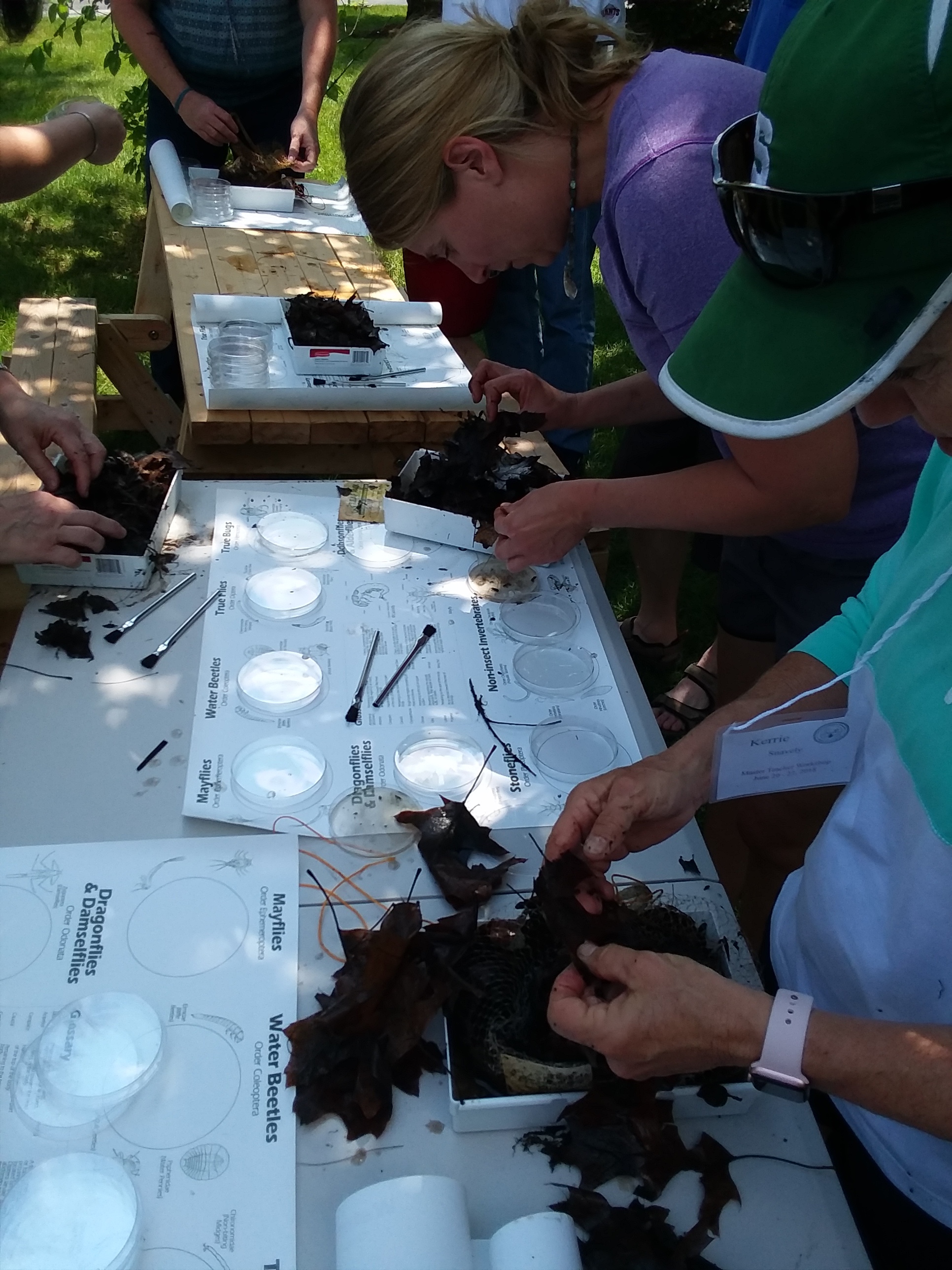Everyone lives in a watershed, regardless of whether you reside where it’s hot and dry or wet and rainy. As the U.S. Geological Survey says, if you’re standing on land, look down, you’re in a watershed.
The 23 teachers, staff developers, and center directors who met this summer at the Concord Consortium offices in Massachusetts understand the critical importance of watersheds—and the skills their students will need to analyze and solve complex environmental issues—from floods to drought. That’s why they dedicated two-and-a-half summer days to advanced hands-on training with Teaching Environmental Sustainability: Model My Watershed, funded by the National Science Foundation.
Developed with the Stroud Water Research Center, Model My Watershed is an award-winning web application used to analyze real land use and soil data, and compare the impact of various conservation methods. A major appeal of the Model My Watershed curriculum is its flexibility; it can be customized to work in many different situations, from classroom lessons and activities focused on local environmental conditions to complex community projects. It’s part of a suite of applications in Stroud’s WikiWatershed Toolkit.
Participants from eight states (CA, CO, IA, KS, MA, MO, PA, VA) included many experienced Model My Watershed master teachers eager to learn about technology innovations such as SensorTags, digital microscopes, and web apps, and to share with colleagues their customized watershed activities. A 6th grade science teacher from Colorado could exchange ideas with an AP Earth science and biology teacher from Kansas or a 9th grade environmental science teacher from Massachusetts.
“It was an opportunity for us to share how the Model My Watershed curriculum is implemented in different ways to meet the needs for our students and classrooms,” explains Stephanie Playton, a staff developer for the state of Virginia, and STEM Learning Specialist for Longwood University’s Institute for Teaching through Technology and Innovative Practices. “It was about empowering the master teachers about how this customizable curriculum could be used for every student, regardless of their grade level or content specialization.”

Participants used the Leaf Pack kit to examine the health of nearby waterways.

Teachers tested the water quality of the Sudbury River.
These dedicated teachers spent the summer solstice in hands-on examination of the Sudbury River and a nearby stream. Half of the group used a water testing kit and Stroud’s Water Quality Mobile App to test the health of the river: fair. The other half used Stroud’s Leaf Packs, handheld digital Wi-Fi microscopes and habitat flashcards to identify worms, leeches, snails, and other aquatic insects in the water. Various technology and applications can be mixed and matched as needed with the Model My Watershed curriculum.
Exemplar activities developed by teachers are available for free on our ITSI Portal. “Teachers can copy activities and make their own versions,” Stephanie explains. “If an activity is for high school and mine is middle school, I can change the vocabulary, or I can use it as is.”

A handheld digital microscope is just one technology innovation used during the workshop.

Participants created Model My Watershed posters customized for their classrooms.
Teaching Environmental Sustainability: Model My Watershed is supported by a grant from the National Science Foundation to the Concord Consortium where Carolyn Staudt serves as the Principal Investigator (PI), along with Steve Kerlin (PI) of Stroud Water Research Center, and Nanette Marcum-Dietrich (PI) of Millersville University of Pennsylvania. The project includes a research component that tracks the program’s effectiveness in 16 middle schools and 22 high schools from the eight states represented by workshop participants. “Using students’ local watershed as the context of exploration and learning, the TES-MMW project connects school science content to real-world applications by using scientific data, knowledge, and practices to participate in evidence-based decision-making about issues impacting their local watershed,” Nanette explained via video link.
Teachers left the workshop with customized posters for use at conference presentations, a box full of useful resources, and lots of new ideas. One teacher noted “how diverse our experiences are but how united we are in providing the best in material and instruction for our students.”
One thought on “Model My Watershed master teacher workshop wades into professional development”
Comments are closed.
Awesome